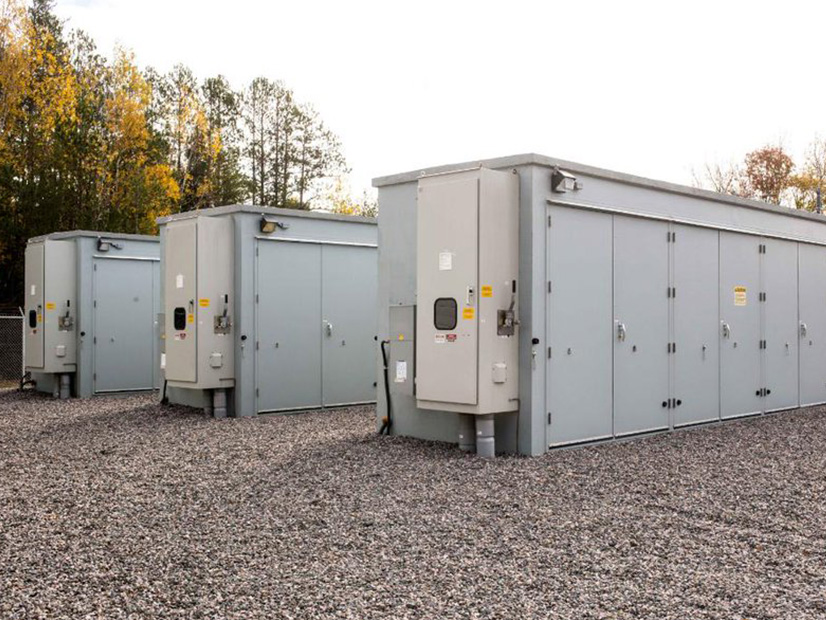
CAISO issued a straw proposal this week that seeks to address the state’s dependence on energy storage for meeting summer evening peaks by paying batteries to stay charged during the day in readiness for when they are needed most.
Avoiding energy emergencies like those in the past two summers requires batteries to be ready to discharge during heat waves in the hours after the sun sets and solar goes offline, CAISO said. But requiring storage resources to maintain a state of charge means they cannot take advantage of other financial opportunities during the day, it said.
“A principal concern raised by the storage community is a lack of compensation during critical periods when the ISO must retain state of charge on limited energy storage devices, which may preclude their active participation in the real-time markets,” the proposal says. “The existing bid cost recovery rules, which are designed based on traditional energy generation resources, do not consider energy storage charging and discharging cycles.”
A main objective of CAISO’s energy storage enhancements stakeholder initiative is to develop a “set of solutions to enhance the optimization of storage resources and to allow additional flexibility for storage operators to manage state of charge in the real-time markets,” the straw proposal says. “The ISO proposes a new model, called the energy storage resource (ESR) model, which is unique from existing models because bids are predicated on state of charge values, rather than a dispatch instruction for power.”
The ESR model would require scheduling coordinators to “submit bids in terms of incremental state of charge instead of traditional bids submitted in terms of incremental energy,” in recognition that a resource’s costs to charge and discharge are different based on its state of charge, it says.
“Specifically, the energy storage resource model will allow storage resources to offer lower prices to provide energy when a battery has a nearly full state of charge and higher prices when it is nearly depleted,” it says. “This new model would be employed in the ISO’s market software for both the day-ahead and real-time markets and could be used by participants in the energy imbalance market.”
Before last summer, FERC approved a temporary two-year measure by CAISO to require batteries to maintain a minimum state of charge on days with insufficient supply to meet demand. The proposed changes are intended as long-term market rules.
Another part of the proposal involves paying storage resources for exceptional dispatch by compensating them “at the difference between the prevailing price during the exceptional dispatch and the reference interval discharge price. The reference interval discharge price will be the period when the storage resource actually discharges and sells energy.”
Batteries Proliferate
The proposed new rules reflect the state’s growing reliance on batteries to maintain reliability.
CAISO will have 2,500 MW of four-hour lithium-ion battery storage connected to its grid by the end of this year, CEO Elliot Mainzer told the Western Energy Imbalance Market’s Governing Body on Wednesday. He called 2021 the “advent of the bulk storage fleet on the California grid.”
“I believe that is the highest concentration of lithium-ion battery storage in the world and testament to years of policy support and procurement efforts by state officials,” he said.
Most of the battery resources were connected in response to the rolling blackouts of August 2020, when the state’s vulnerabilities to outages during severe Western heat waves became clear. The state’s increasing reliance on solar and wind power, without sufficient storage, was partly to blame for the energy emergencies. (See CAISO Sees ‘Explosive’ Growth in Storage in July.)
The energy storage enhancements stakeholder initiative, which began in May, focuses on market reforms to bring massive amounts of utility-scale storage into CAISO’s system to back up the solar and wind power needed for California’s transition to 100% clean energy by 2045, as well as to meet local capacity requirements. (See CAISO Readies for Storage Scale-up.)
The separate energy storage and distributed energy resources (ESDER) stakeholder initiative began five years ago and proposed numerous changes in four phases. FERC approved the fourth phase in October; it included market power mitigation measures for storage resources and biddable state-of-charge parameters. (See FERC Accepts Latest CAISO Storage, DER Rules.)
CAISO expects to add at least another 1,000 to 2,000 MW of storage in 2022-2024, most of it in lithium-ion batteries with four-hour discharging capacity.
Summer reliability issues will likely continue through 2024, as natural gas plants close and the state’s last nuclear generator, Pacific Gas and Electric’s Diablo Canyon power plant, begins shutting down, CAISO has said. State energy planners hope a large-scale buildout of solar, wind and batteries will compensate.


